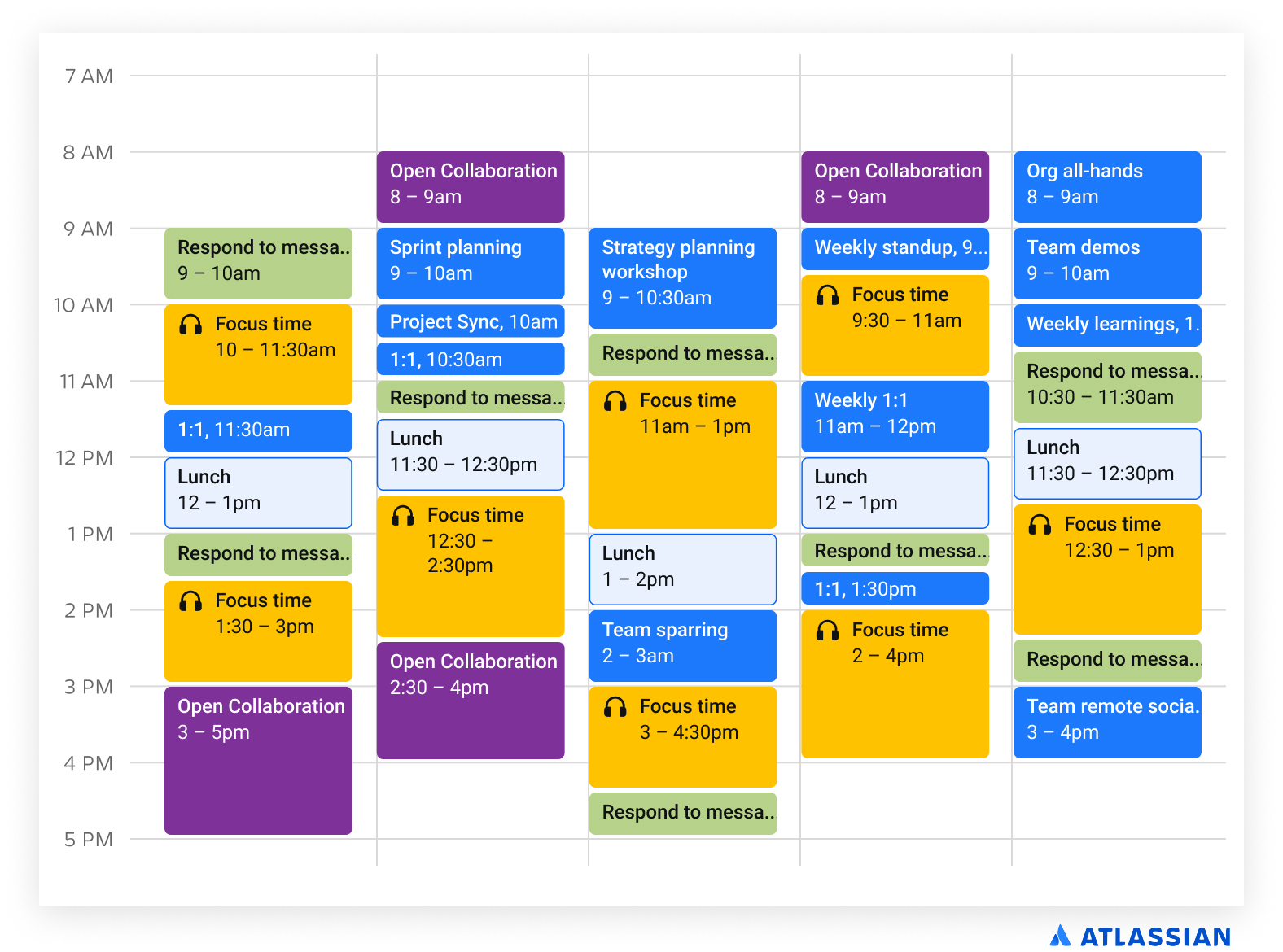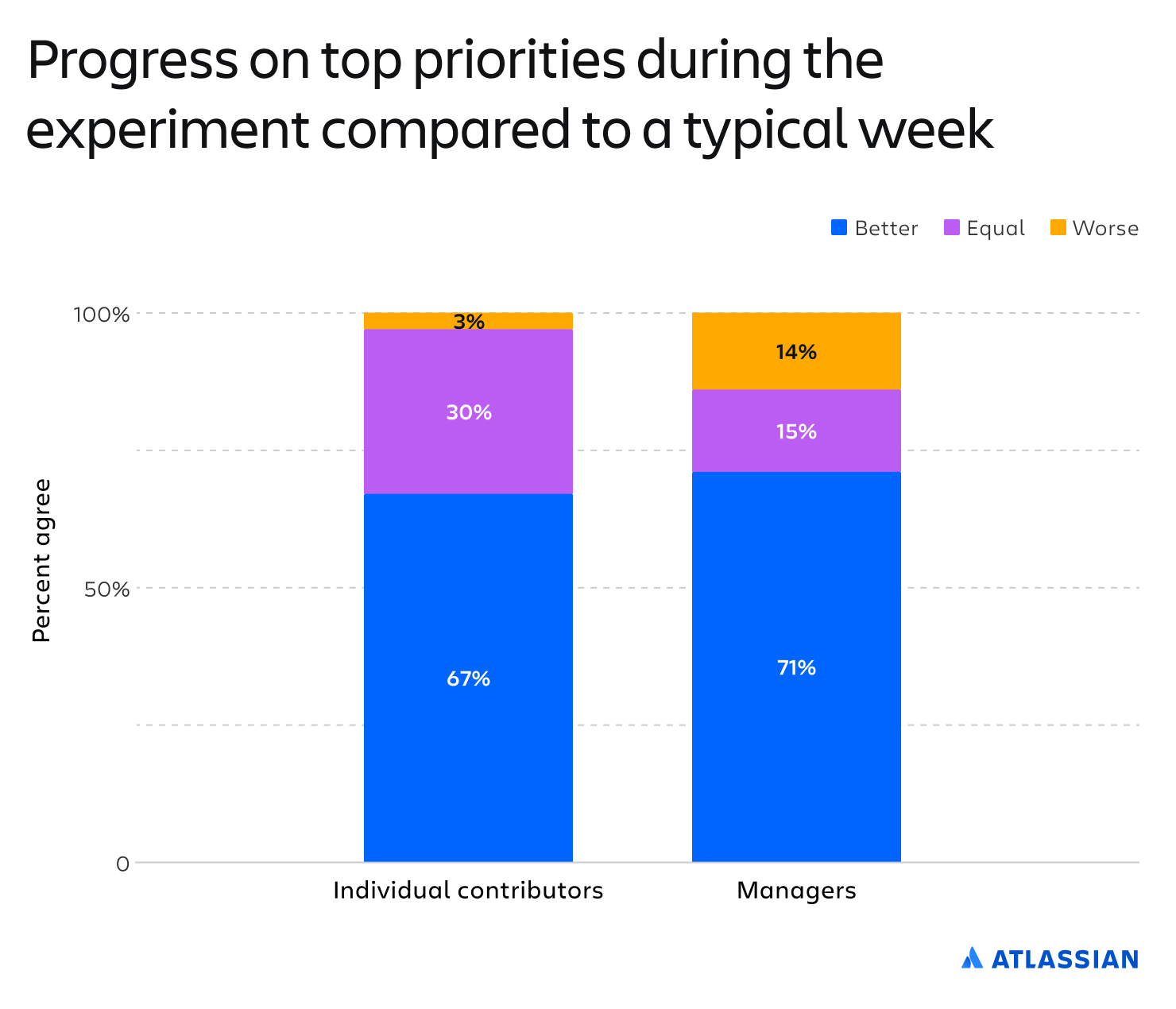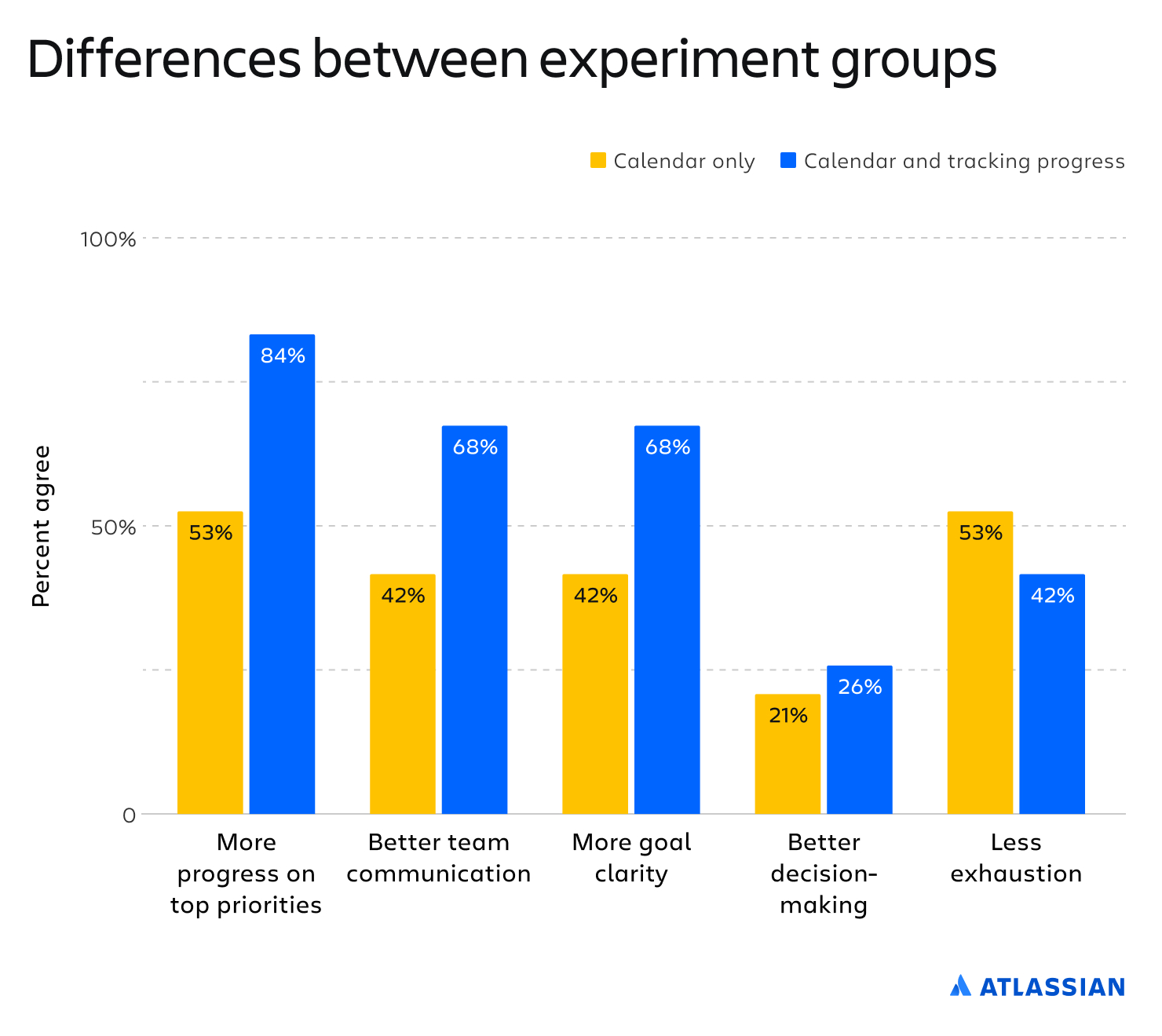New research: How to make time for the work that matters
Designing your workday around your top priorities helps you get more done faster – and leaves you less exhausted.
Do you feel like you’re constantly “busy” but still find it hard to make progress on your top-priority tasks?
Are you so overwhelmed by meetings and messages that you’re forced to start your most important work at 4pm, exactly when you’re the most exhausted?
You’re not alone. The average employee spends nearly a third of their day reading and answering emails. Workers say that half of the meetings they attend are costly and unproductive. And Fortune 500 executives say that helping employees collaborate more effectively is their top priority.
These are some of the challenges my team hopes to solve. I lead the Team Anywhere Lab, a group of behavioral scientists at Atlassian with PhDs in fields like industrial and organizational psychology and organizational behavior. Our mission is to design and validate new best practices for modern teams.
The calendar redesign experiment
Most recently, the Team Anywhere Lab set out to answer the question: What new ways of working might help Atlassians make faster progress and feel better at the end of each day?
We decided to test what would happen if we enabled Atlassians to design their workdays around their top priorities instead of around attending meetings and reacting to notifications.
Fifty-nine Atlassians from across the company were split into two groups. Both were given instructions on how to intentionally design their calendars, but one group was also asked to track progress on their top work priority each day.
Here are the five steps each participant took as part of the experiment:
- Edit existing meetings. Decline any meetings that aren’t a high priority and group existing meetings together to free up focus time.
- Schedule any “not available” time: This might include lunch, school drop-offs, or doctor appointments.
- Schedule “open collaboration” time. Block off a few hours in your week when you know your key collaborators will also be online. These calendar holds give you the flexibility to jump into high-priority work together as it comes up during the week. Aim for 10-20% of your week to be open collaboration time.
- Schedule “focus” time. Block off at least 90-minute chunks of time for work that requires deep thinking. Aim for 30-40% of your week to be spent on focus time.
- Schedule “respond to messages” time. Choose times when your brain is up for this type of work — say, just after lunch or a block of meetings. Blocking time removes the temptation to constantly check notifications.
Here’s an example of what someone’s weekly calendar might look like after they’ve followed the steps above:

We ran the experiment for one week, and we looked at calendar and survey data during the weeks before and after the experiment to pick up on any longer-lasting changes.
Our experiment shows that intentionally designing your workday:
- Helps you make faster progress on high-impact work
- Leads to improved goal clarity
- Is even more effective when you also track your progress
Faster progress on high-impact work
67% of individual contributors and 71% of managers who participated in the experiment felt that the guidance they received helped them make more progress on top priorities than they would have in a typical week.

This result is likely because Atlassians who took part in the experiment declined 17% more meetings than usual and spent 13% (1.5 hours) less time in meetings.
Participants also timeboxed 49% more time for specific types of work (e.g., deep focus, collaboration, messaging), creating nearly 2x the total calendar blocks dedicated to specific types of work. This included 9% more focus time blocks and 25% more “not available” blocks.
Timeboxing is a time management technique where you block off a specific amount of time to work on specific tasks.
For example, a designer may put a hold on their calendar between 9 and 11am on Tuesday morning for “Homepage illustrations.” This makes it more likely that the designer follows through on completing that work during that period – and indicates to others that they should not schedule a meeting with the designer at that time.
Calendar blocks for open collaboration and responding to messages were directly beneficial for making progress on top priorities. In other words, the more time someone blocked off for these activities, the more progress they made on their most important work.

We noticed that, before the experiment, employees were using the phrase “focus time” to describe many types of non-meeting work. Many participants said that they learned how to more accurately bucket their work into different categories, and felt that they actually had much more time to focus during and after the experiment.
Most notable was that participants continued to decline meetings and timebox their top priorities even after the experiment ended. Not only did the calendar redesign guidance improve how they felt and how much progress they made, but it seems to have more permanently changed their behavior.
Improved goal clarity
57% of individual contributors who participated in the experiment felt that they had more goal clarity than they did in a typical week. This effect was smaller, but still notable, among managers (43% of managers felt they had more goal clarity than in a typical week).
Overall goal clarity jumped by 26% compared to when Atlassians were not intentionally designing their workdays. Our hypothesis is that if you organize your day around your most important work, you first have to identify your most important work, which leads to improved goal clarity.
Designing your workday and tracking progress is most effective
Compared to participants who only restructured their time, participants who also made it a point to track how they were doing every day reported:
- A 26% larger boost in goal clarity
- A 30% larger increase in how sustainable their workload felt (the participants that did not track their progress daily did not feel any differently about their workload)
- A 31% larger boost in progress on their top priorities.

When we don’t intentionally structure our time, we’re more likely to spend the majority of our workday reacting to notifications or attending (often useless) meetings. This leaves us drained, scattered, and less likely to have pushed forward high-priority projects.
The key to having an impact – and to feeling less overwhelmed – is to focus on the work that matters most. Our research proves that intentionally creating the time and space to do this leads to more productive, happier employees.
Download our one-pager that outlines our experimental design and key results.











































